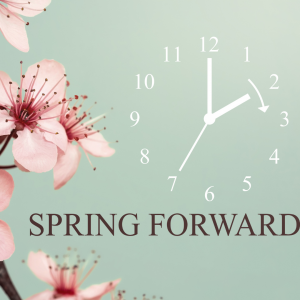Daylight Savings Time deserves some attention when talking about preserving your child’s sleep. If I had it my way, there wouldn’t be daylight savings time! Most adults look forward to gaining an hour of sleep in the fall, but it sends fears straight through parents. Whether “spring forward” or “fall back,” it is helpful to ease your child into the time change in regards to their sleep schedule.
How to Manage Sleep Through a Time Change

Spring Forward 2021 is upon us (Sunday, March 14th). As a Certified Pediatric Sleep Specialist, I help families solve their sleeping problems every day. I get a ton of questions about what to do with the time change both during the spring and the fall.
If your child is an early riser (earlier than you’d like), Spring Forward is for YOU! You can choose to “do nothing.” A 5 am riser, becomes a 6 am riser, BAM! You’d need to offer your child’s nap(s) and bedtime one hour later to keep that schedule going.
Otherwise, follow these tips:
-
If your child naps, shift nap time later by 30 minutes for three days. So, a 12:00 pm nap becomes 12:30 pm (feels like 11:30 am on their body).
-
Shift bedtime later by 30 minutes for three days. A 7:00 pm bedtime becomes 7:30 pm (feels like 6:30 pm).
-
Let your child wake naturally in the morning. Most babies aren’t going to sleep so late that it has a major impact on the rest of their sleep, and early rising is a much harder sleep problem to overcome.
-
On day 4, get your child back on their normal sleep schedule.
-
If your baby is not on a set schedule yet and you follow wake windows, honor those same wake windows. You can use this time change to push bedtime a little later, or you can cap the last nap of the day to adjust to a normal bedtime.
Most children are back on track and adjusted after about one week after the time change!














